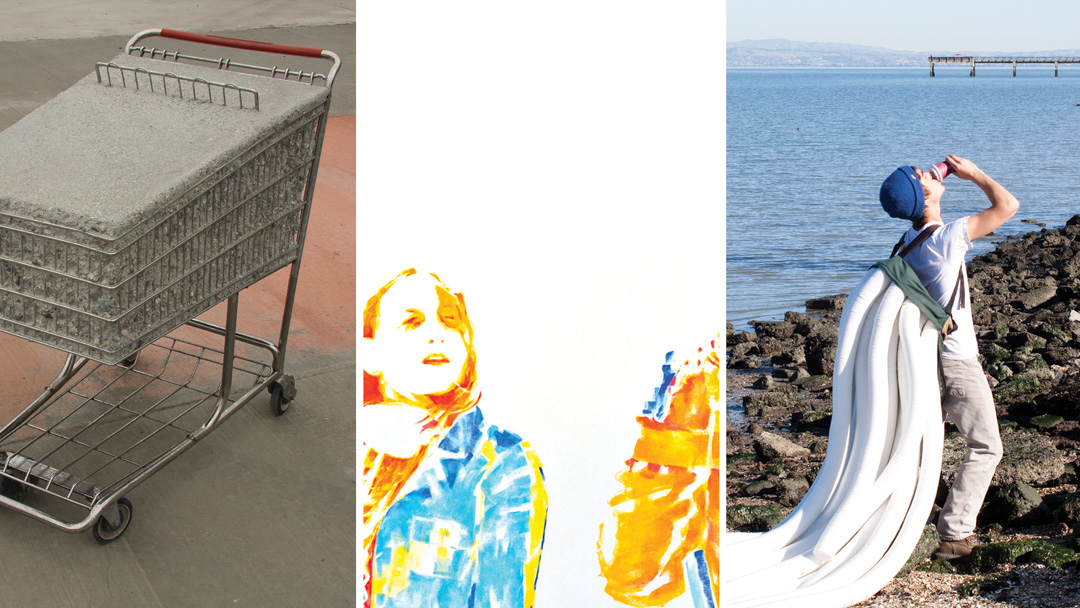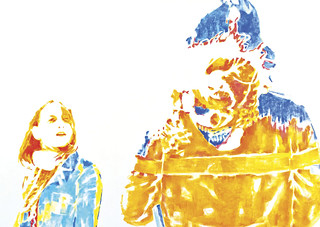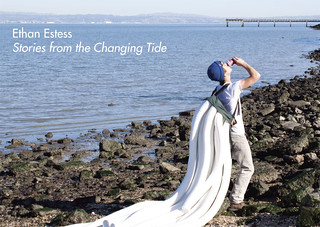
December 16, 2011
FOR IMMEDIATE RELEASE
When:
Reception-Friday, January 20, 2012, 5-9pm
Reception-Saturday, January 21, 2012, 1-5pm
Where:
Art Studio located at 503 Tunnel Ave.
Environmental Learning Center Gallery at 401 Tunnel Ave.
Admission is free and open to the public, all ages welcome, wheelchair accessible.
San Francisco, CA–The Artist in Residence Program at Recology San Francisco will host an exhibition and reception for current artists-in-residence Terry Berlier, Donna Anderson Kam, and Ethan Estess on Friday, January 20, from 5-9pm and Saturday, January 21, from 1-5pm. This exhibition will be the culmination of four months of work by the artists who have scavenged materials from the dump to make art and promote recycling and reuse.

Terry Berlier: Even the Windmills are Weakening It is not unusual that Berlier is interested in how history and time mediate our understanding of ingenuity. Berlier’s own ingenuity is a main component of her work, and she frequently employs mechanical or scientific methods in sculptures that are often kinetic or physically engage the viewer. Past works have addressed nuclear storage facilities, time as recorded in tree rings or core samples, as well as issues of queer identity, interpersonal relations, and how we negotiate being human in a technological age. Berlier asks, “…as innovations alter how we perceive and interact with the world, are we coming closer to or farther from understanding each other and the world around us?” Also of interest to Berlier is sound and the instruments and machines involved in its production. An underlying current of humor can also be found in her work, along with an appreciation for failed inventions and a camaraderie with those that have made them. Berlier is Assistant Professor of Sculpture at Stanford University. |

Donna Anderson Kam: Beginning at the End During her residency, Anderson Kam has used the Recology San Francisco facility as a backdrop for her actors and recognizable areas—the sculpture garden, hillside, and Public Disposal Building are all visible in her final pieces. She has also incorporated new materials into her practice including computer paper and advertising signage, and as pastels have been harder to come by, she is working with a variety of chalks and crayons. Expanding on the narrative nature of her work, she plans to present drawings in free-standing circular formats, enabling the viewer to walk around a piece, entering and exiting at any place to create their own beginning and end. |

Ethan Estess: Stories from the Changing Tide Says Estess, “If there is one thing that I have discovered by studying the ocean, it is that it is greatly imperiled – it is treated both as humanity’s waste bin and its fast food joint. As a result, most of my works tell narratives about environmental science issues, from marine plastic pollution to shark conservation. My focus is on appealing to the basic emotions of the viewer such that they can understand the scientific concepts at play and internalize the gravity of humanity’s impact on the global ecosystem.” While at Recology Estess has been drawn to the copious amount of plastics found in the Public Disposal and Recycling Area, and in particular, items that have never been used, such as cases of coffee cup lids. The works he has created from his finds should hopefully give viewers pause and prompt thinking about the daily decisions we make and their effect on the environment. Estess’s work will be on view at the Recology Environmental Learning Center at 401 Tunnel Avenue. |
| The Artist in Residence Program at Recology San Francisco is a one-of-a-kind program established in 1990 to encourage the conservation of natural resources and instill a greater appreciation for the environment and art in children and adults. Artists work for four months in studio space on site, use materials recovered from the Public Disposal and Recycling Area, and speak to students and the general public. Over ninety professional Bay Area artists have completed residencies. Applications are accepted annually in August. |